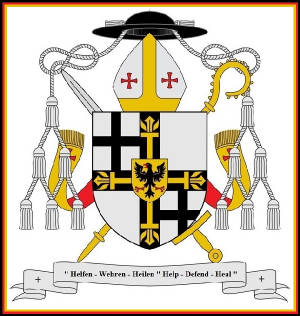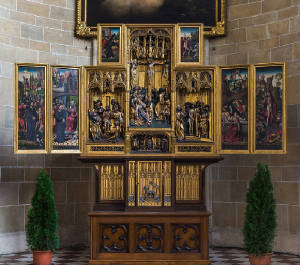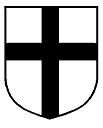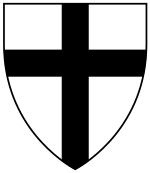
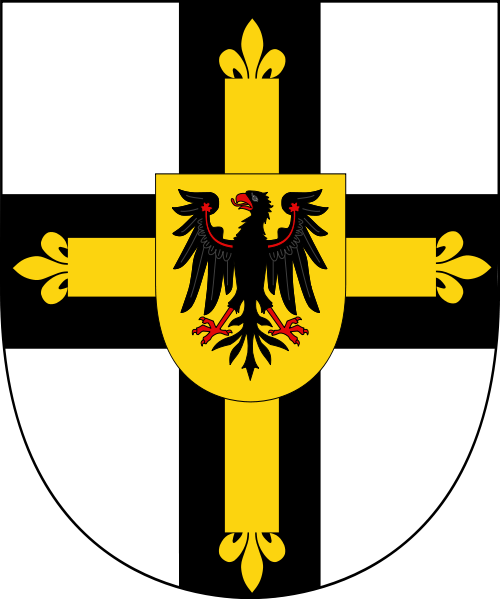

Teutonic Order of the German Knights
of St Mary
(official names: Latin:
Ordo domus Sanctæ Mariæ Theutonicorum Hierosolymitanorum, German: Orden der Brüder vom Deutschen
Haus der Heiligen Maria in Jerusalem), commonly the Teutonic Order (Deutscher Orden,
Deutschherrenorden or Deutschritterorden), is a Catholic religious order founded as a
military order c. 1190 in Acre, Kingdom of Jerusalem. The Teutonic Order was formed to aid
Christians on their pilgrimages to the Holy Land and to establish hospitals. Its members have commonly been known as the Teutonic
Knights, having a small voluntary and mercenary military membership, serving as a crusading military order for protection
of Christians in the Holy Land and the Baltics during the Middle Ages.

Name of the Order
The full name of the Order in German is Orden der Brüder vom Deutschen Haus St. Mariens in Jerusalem
or in Latin Ordo domus Sanctæ Mariæ Theutonicorum Hierosolymitanorum (engl. "Order of the House
of St. Mary of the Germans in Jerusalem"). Thus, the term 'Teutonic' refers to the German origins of the order in Latin.
It is commonly known in German as the Deutscher Orden (official short name, literally "German Order"),
historically also as Deutscher Ritterorden ("German Order of Knights"), Deutschherrenorden, Deutschritterorden
("Order of the German Knights"), Marienritter ("Knights of Mary"), Die Herren im weißen
Mantel ("The lords in white capes"), etc.
The Teutonic Knights have been known as Zakon Krzyżacki in Polish ("Order of the Cross")
and as Kryžiuočių Ordinas in Lithuanian, Vācu Ordenis in Latvian, Saksa Ordu
or, simply, Ordu ("The Order") in Estonian, as well as various names in other languages. Knighthood was
associated to feudalism and service. The knight was always required to help the sick and wounded after a battle and was regarded
to be brave, honest and determined.
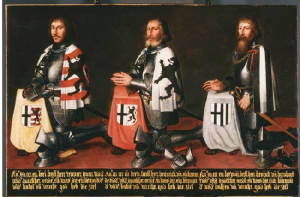
History
of the Order
Formed in the year 1192 in Acre, in the Levant, the medieval Order played
an important role in Outremer (the general name for the Crusader states), controlling the port tolls of Acre. After Christian
forces were defeated in the Middle East, the Order moved to Transylvania in 1211 to help defend the South-Eastern borders
of the Kingdom of Hungary against the Cumans. The Knights were expelled by force of arms by King Andrew II of Hungary in 1225,
after attempting to place themselves under papal instead of the original Hungarian sovereignty and thus to become independent.
In 1230, following the Golden Bull of Rimini, Grand Master Hermann
von Salza and Duke Konrad I of Masovia launched the Prussian Crusade, a joint invasion of Prussia intended to Christianize
the Baltic Old Prussians. The Knights had quickly taken steps against their Polish hosts and with the Holy Roman Emperor's
support, had changed the status of Chełmno Land (also Ziemia Chelminska or Kulmerland), where they were invited by the
Polish prince, into their own property. Starting from there, the Order created the independent Monastic State of the Teutonic
Knights, adding continuously the conquered Prussians' territory, and subsequently conquered Livonia. Over time, the kings
of Poland denounced the Order for expropriating their lands, specifically Chełmno Land and later the Polish lands of
Pomerelia (also Pomorze Gdańskie or Pomerania), Kujawy, and Dobrzyń Land.
The Order theoretically lost its main purpose in Europe with the Christianization of Lithuania. However, it initiated
numerous campaigns against its Christian neighbours, the Kingdom of Poland, the Grand Duchy of Lithuania, and the Novgorod
Republic (after assimilating the Livonian Order). The Teutonic Knights had a strong economic base which enabled them to
hire mercenaries from throughout Europe to augment their feudal levies, and they also became a naval power in the Baltic
Sea. In 1410, a Polish-Lithuanian army decisively defeated the Order and broke its military power at the Battle of Grunwald
(Tannenberg). However, the capital of the Teutonic Knights was successfully defended in the following Siege of Marienburg
and the Order was saved from collapse.
In 1515, Holy Roman
Emperor Maximilian I made a marriage alliance with Sigismund I of Poland-Lithuania. Thereafter, the empire did not support
the Order against Poland. In 1525, Grand Master Albert of Brandenburg resigned and converted to Lutheranism, becoming Duke
of Prussia as a vassal of Poland. Soon after, the Order lost Livonia and its holdings in the Protestant areas of Germany.
The Order did keep its considerable holdings in Catholic areas of Germany until 1809, when Napoleon Bonaparte ordered its
dissolution and the Order lost its last secular holdings. However, the Order continued to exist as a charitable and ceremonial
body. It was outlawed by Adolf Hitler in 1938, but re-established in 1945. Today it operates primarily with charitable aims
in Central Europe.
The Knights wore white surcoats with
a black cross. A cross pattée was sometimes used as their coat of arms; this image was later used for military decoration
and insignia by the Kingdom of Prussia and Germany as the Iron Cross and Pour le Mérite. The motto of the Order was:
"Helfen, Wehren, Heilen" ("Help, Defend, Heal").
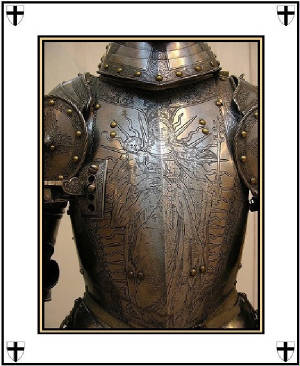
Timeline
- 1198 Formation
- 1218 Siege of Damietta
- 1228–1229 The Sixth Crusade
- 1237
absorption of The Livonian Brothers of the Sword
- 1242 The Battle on
the Ice
- 1242–1249 First Prussian Uprising
- 1249 Treaty of Christburg with the pagan Prussians signed on February 9
- 1249 Battle of Krücken
- 1260 Battle
of Durbe
- 1260–1274 Great Prussian Uprising
- 1262 Siege of Königsberg
- 1263
Battle of Löbau
- 1264 Siege of Bartenstein
- 1270 Battle of Karuse
- 1271 Battle of
Pagastin
- 1279 Battle of Aizkraukle
- 1291 Siege of Acre (1291)
- 1308–1309 Teutonic takeover
of Danzig and Treaty of Soldin
- 1326–1332 First Polish–Teutonic
War, for Kuyavia, with involvement of Lithuania and Hungary
- 1331 Battle
of Płowce
- 1343 Treaty of Kalisz, exchange of Kuyavia for Kulm and
other territories
- 1343–1345 St. George's Night Uprising
- 1346 Purchase of Duchy of Estonia from Denmark
- 1348 Battle of Strėva
- 1370 Battle of Rudau
- 1409–1411 Polish–Lithuanian–Teutonic War, the Teutonic knights are defeated
by Polish king Władysław II Jagiełło and Lithuanian Grand duke Vytautas the Great at the Battle of Grunwald
(Tannenberg) (1410)
- 1414 Hunger War
- 1422 Gollub War ending with the Treaty of Melno
- 1431–1435
Second Polish–Teutonic War
- 1454–1466 Thirteen Years' War
- 1466 Second Peace of Thorn (1466)
- 1467–1479
War of the Priests
- 1519–1521 Third Polish–Teutonic War
- 1525 the Livonian Order buys itself de facto independent from the Teutonic Order
- 1525 Order loses State of the Teutonic Order due to the Prussian Homage, it becomes Ducal
Prussia
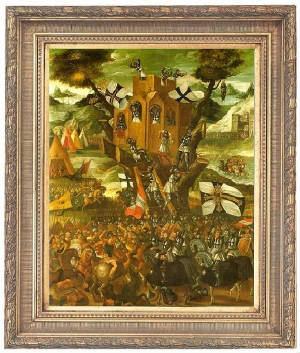
Foundation
In 1143 Pope Celestine II ordered the Knights Hospitaller to take over
management of a German hospital in Jerusalem, which, according to the chronicler Jean d’Ypres, accommodated the countless
German pilgrims and crusaders who could neither speak the local language nor Latin (patriæ linguam ignorantibus
atque Latinam). Although formally an institution of the Hospitallers, the pope commanded that the prior and the brothers
of the domus Theutonicorum (house of the Germans) should always be Germans themselves, so a tradition of a German-led
religious institution could develop during the 12th century in the Kingdom of Jerusalem.
After the loss of Jerusalem in 1187, some merchants
from Lübeck and Bremen took up the idea and founded a field hospital for the duration of the Siege of Acre in 1190, which
became the nucleus of the order; Celestine III recognized it in 1192 by granting the monks Augustinian Rule. However, based
on the model of the Knights Templar, it was transformed into a military order in 1198 and the head of the order became known
as the Grand Master (magister hospitalis). It received papal orders for crusades to take and hold Jerusalem for Christianity
and defend the Holy Land against the Muslim Saracens. During the rule of Grand Master Hermann von Salza (1209–1239)
the Order changed from being a hospice brotherhood for pilgrims to primarily a military order.
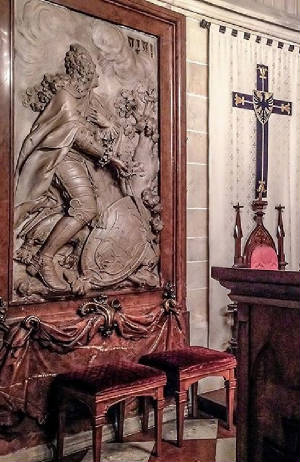
The Order was founded in Acre, and the Knights purchased Montfort
(Starkenberg), northeast of Acre, in 1220. This castle, which defended the route between Jerusalem and the Mediterranean Sea,
was made the seat of the Grand Masters in 1229, although they returned to Acre after losing Montfort to Muslim control in
1271. The Order also had a castle at Amouda in Armenia Minor. The Order received donations of land in the Holy Roman Empire
(especially in present-day Germany and Italy), Frankish Greece, and the Kingdom of Jerusalem.
Emperor Frederick II elevated his close friend Hermann von Salza to the status of Reichsfürst,
or "Prince of the Empire", enabling the Grand Master to negotiate with other senior princes as an equal. During
Frederick's coronation as King of Jerusalem in 1225, Teutonic Knights served as his escort in the Church of the Holy Sepulchre;
von Salza read the emperor's proclamation in both French and German. However, the Teutonic Knights were never as influential
in Outremer as the older Templars and Hospitallers.

Transylvania,
Kingdom of Hungary
In 1211,
Andrew II of Hungary accepted the services of the Teutonic Knights and granted them the district of Burzenland in Transylvania,
where they would be immune to fees and duties and could enforce their own justice. Andrew had been involved in negotiations
for the marriage of his daughter with the son of Hermann, Landgrave of Thuringia, whose vassals included the family of Hermann
von Salza. Led by a brother called Theoderich or Dietrich, the Order defended the south-eastern borders of the Kingdom of
Hungary against the neighbouring Cumans. Many forts of wood and mud were built for defence. They settled new German peasants
among the existing Transylvanian Saxon inhabitants. The Cumans had no fixed settlements for resistance, and soon the Teutons
were expanding into their territory. By 1220, The Teutonics Knights had built five castles, some of them made of stone.
Their rapid expansion made the Hungarian nobility and clergy, who were previously uninterested in those regions, jealous
and suspicious. Some nobles claimed these lands, but the Order refused to share them, ignoring the demands of the local
bishop. After the Fifth Crusade, King Andrew returned to Hungary and found his kingdom full of grudge because of the expenses
and losses of the failed military campaign. When the nobles demanded that he cancel the concessions made to the Knights,
he concluded that they had exceeded their task and that the agreement should be revised, but did not revert the concessions.
However, Prince Béla, heir to the throne, was allied with the nobility. In 1224, the Teutonic Knights, seeing that
they would have problems when the Prince inherited the Kingdom, petitioned Pope Honorius III to be placed directly under
the authority of the Papal See, rather than that of the King of Hungary. This was a grave mistake, as King Andrew, angered
and alarmed at their growing power, responded by expelling the Teutonic Knights in 1225, although he allowed the ethnically
German commoners and peasants settled here by the Order and who became part of the larger group of the Transylvanian Saxons,
to remain. Lacking the military organization and experience of the Teutonic Knights, the Hungarians did not replace them
with adequate defenses and stopped the attacks against the Cumans. Soon, the steppe warriors would be a threat again.
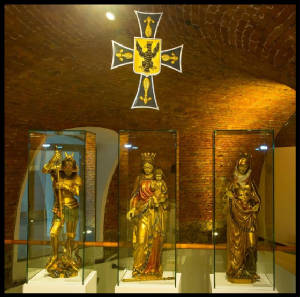
Prussia
In 1226, Konrad I, Duke
of Masovia in north-eastern Poland, appealed to the Knights to defend his borders and subdue the pagan Baltic Prussians, allowing
the Teutonic Knights use of Chełmno Land (Culmerland) as a base for their campaign. This being a time of widespread
crusading fervor throughout Western Europe, Hermann von Salza considered Prussia a good training ground for his knights for
the wars against the Muslims in Outremer. With the Golden Bull of Rimini, Emperor Frederick II bestowed on the Order a special
imperial privilege for the conquest and possession of Prussia, including Chełmno Land, with nominal papal sovereignty.
In 1235 the Teutonic Knights assimilated the smaller Order of Dobrzyń, which had been established earlier by Christian,
the first Bishop of Prussia. Conquest of Prussia was accomplished with much
bloodshed over more than fifty years, during which native Prussians who remained unbaptised were subjugated, killed, or
exiled. Fighting between the Knights and the Prussians was ferocious; chronicles of the Order state the Prussians would "roast
captured brethren alive in their armour, like chestnuts, before the shrine of a local god".
The native nobility who submitted to the crusaders had many of their privileges affirmed
in the Treaty of Christburg. After the Prussian uprisings of 1260–83, however, much of the Prussian nobility emigrated
or were resettled, and many free Prussians lost their rights. The Prussian nobles who remained were more closely allied
with the German landowners and gradually assimilated. Peasants in frontier regions, such as Samland, had more privileges
than those in more populated lands, such as Pomesania. The crusading knights often accepted baptism as a form of submission
by the natives. Christianity along western lines slowly spread through Prussian culture. Bishops were reluctant to have
Prussian religious practices integrated into the new faith, while the ruling knights found it easier to govern the natives
when they were semi-pagan and lawless. After fifty years of warfare and brutal conquest, the end result meant that most
of the Prussian natives were either killed or deported.
The Order ruled Prussia under charters issued by
the Pope and the Holy Roman Emperor as a sovereign monastic state, comparable to the arrangement of the Knights Hospitallers
in Rhodes and later in Malta. To make up for losses from the plague and to replace the partially exterminated native population,
the Order encouraged immigration from the Holy Roman Empire (mostly Germans, Flemish, and Dutch) and from Masovia (Poles),
the later Masurians. These included nobles, burghers, and peasants, and the surviving Old Prussians were gradually assimilated
through Germanization. The settlers founded numerous towns and cities on former Prussian settlements. The Order itself built
a number of castles (Ordensburgen) from which it could defeat uprisings of Old Prussians, as well as continue its
attacks on the Grand Duchy of Lithuania and the Kingdom of Poland, with which the Order was often at war during the 14th
and 15th centuries. Major towns founded by the Order included Allenstein (Olsztyn), Elbing (Elbląg), Klaipėda (Memel),
and Königsberg, founded in 1255 in honor of King Otakar II of Bohemia on the site of a destroyed Prussian settlement.
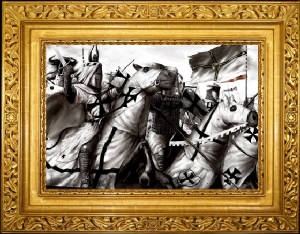
Livonia
The
Livonian Brothers of the Sword were absorbed by the Teutonic Knights in 1237, after the former had suffered a devastating
defeat in the Battle of Saule. The Livonian branch subsequently became known as the Livonian Order. Attempts to expand into
Rus failed when the knights suffered a major defeat in 1242 in the Battle of the Ice at the hands of Prince Alexander Nevsky
of Novgorod. Over the next decades the Order focused on the subjugation of the Curonians and Semigallians. In 1260 it suffered
a disastrous defeat in the Battle of Durbe against Samogitians, which inspired rebellions throughout Prussia and Livonia.
After the Teutonic Knights won a crucial victory in the Siege of Königsberg from 1262 to 1265, the war had reached a
turning point. The Curonians were finally subjugated in 1267 and the Semigallians in 1290. The Order suppressed a major Estonian
rebellion in 1343–1345, and in 1346 purchased the Duchy of Estonia from Denmark.
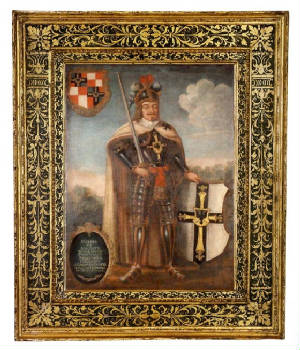
Against Lithuania
The Teutonic Knights began to direct their campaigns against pagan Lithuania (see Lithuanian mythology), due to
the long existing conflicts in the region (including constant incursions into the Holy Roman Empire's territory by pagan
raiding parties) and the lack of a proper area of operation for the Knights, after the fall of the Kingdom of Jerusalem
at Acre in 1291 and their later expulsion from Hungary. At first the knights moved their headquarters to Venice, from which
they planned the recovery of Outremer, this plan was, however, shortly abandoned, and the Order later moved its headquarters
to Marienburg, so it could better focus its efforts on the region of Prussia. Because "Lithuania Propria" remained
non-Christian until the end of the 14th century, much later than the rest of eastern Europe, the conflicts stretched out
for a longer time, and many Knights from western European countries, such as England and France, journeyed to Prussia to
participate in the seasonal campaigns (reyse) against the Grand Duchy of Lithuania. In 1348, the Order won a great
victory over the Lithuanians in the Battle of Strėva, severely weakening them. The Teutonic Knights won a decisive victory
over Lithuania in the Battle of Rudau in 1370.
Warfare
between the Order and the Lithuanians was especially brutal. It was common practice for Lithuanians to torture captured
enemies and civilians, it is recorded by a Teutonic chronicler that they had the habit of tying captured Knights to their
horses and having both of them burned alive, while sometimes a stake would be driven into their bodies, or the Knight would
be flayed. Lithuanian pagan customs included ritualistic human sacrifice, the hanging of widows, and the burying of a warrior's
horses and servants with him after his death. The Knights would also, on occasion, take captives from defeated Lithuanians,
whose condition (as that of other war captives in the Middle Ages) was extensively researched by Jacques Heers. The conflict
had much influence in the political situation of the region, and was the source of many rivalries between Lithuanians or
Poles and Germans, the degree to which it impacted the mentalities of the time can be seen in the lyrical works of men such
as the contemporary Austrian poet Peter Suchenwirt. The conflict in its entirety lasted over 200 years (although with varying
degrees of aggression during that time), with its front line along both banks of the Neman River, with as many as twenty
forts and castles between Seredžius and Jurbarkas alone.
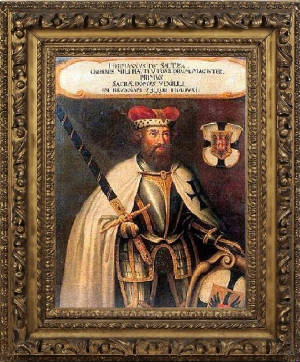
Against Poland
A dispute over the succession to the Duchy of Pomerelia embroiled the Order in further conflict
at the beginning of the 14th century. The Margraves of Brandenburg had claims to the duchy that they acted upon after the
death of King Wenceslaus of Poland in 1306. Duke Władysław I the Elbow-high of Poland also claimed the duchy, based
on inheritance from Przemysław II, but he was opposed by some Pomeranians nobles. They requested help from Brandenburg,
which subsequently occupied all of Pomerelia except for the citadel of Danzig (Gdańsk) in 1308. Because Władysław
was unable to come to the defense of Danzig, the Teutonic Knights, then led by Hochmeister Siegfried von Feuchtwangen, were
called to expel the Brandenburgers.
The Order, under a
Prussian Landmeister Heinrich von Plötzke, evicted the Brandenburgers from Danzig in September 1308 but then refused
to yield the town to the Poles, and according to some sources massacred the town's inhabitants; although the exact extent
of the violence is unknown, and widely recognized by historians to be an unsolvable mystery. The estimates range from 60
rebellious leaders, reported by dignitaries of the region and Knight chroniclers, to 10,000 civilians, a number cited in
a papal bull (of dubious procedence) that was used in a legal process installed to punish the Order for the event; the legal
dispute went on for a time, but the Order was eventually absolved of the charges. In the Treaty of Soldin, the Teutonic Order
purchased Brandenburg's supposed claim to the castles of Danzig, Schwetz (Świecie), and Dirschau (Tczew) and their hinterlands
from the margraves for 10,000 marks on 13 September 1309.
Control
of Pomerelia allowed the Order to connect their monastic state with the borders of the Holy Roman Empire. Crusading reinforcements
and supplies could travel from the Imperial territory of Hither Pomerania through Pomerelia to Prussia, while Poland's access
to the Baltic Sea was blocked. While Poland had mostly been an ally of the knights against the pagan Prussians and Lithuanians,
the capture of Pomerelia turned the kingdom into a determined enemy of the Order.
The capture of Danzig marked a new phase in the history of the Teutonic Knights. The persecution and abolition of
the powerful Knights Templar, which began in 1307, worried the Teutonic Knights, but control of Pomerelia allowed them to
move their headquarters in 1309 from Venice to Marienburg (Malbork) on the Nogat River, outside the reach of secular powers.
The position of Prussian Landmeister was merged with that of the Grand Master. The Pope began investigating misconduct by
the knights, but no charges were found to have substance. Along with the campaigns against the Lithuanians, the knights
faced a vengeful Poland and legal threats from the Papacy. The Treaty of Kalisz of 1343 ended open war between
the Teutonic Knights and Poland. The Knights relinquished Kuyavia and Dobrzyń Land to Poland, but retained Culmerland
and Pomerelia with Danzig.
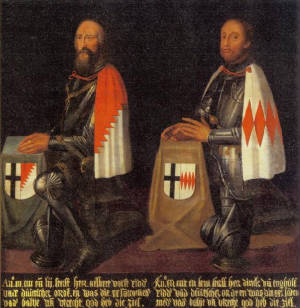
Defeat by the Mongols
In 1236, the Knights of Saint Thomas, an English order, adopted the
rules of the Teutonic Order. A contingent of Teutonic Knights of indeterminate number is traditionally believed to have
participated at the Battle of Legnica in 1241 against the Mongols. The combined German-Polish/Lithuanian force was crushed
by the Mongol army and their superior tactics, with few survivors.

Height of power
In 1337, Emperor Louis IV
allegedly granted the Order the imperial privilege to conquer all Lithuania and Russia. During the reign of Grand Master Winrich
von Kniprode (1351–1382), the Order reached the peak of its international prestige and hosted numerous European crusaders
and nobility. King Albert of Sweden ceded Gotland to the Order as a pledge (similar to a fiefdom), with the understanding
that they would eliminate the pirating Victual Brothers from this strategic island base in the Baltic Sea. An invasion force
under Grand Master Konrad von Jungingen conquered the island in 1398 and drove the Victual Brothers out of Gotland and the
Baltic Sea.
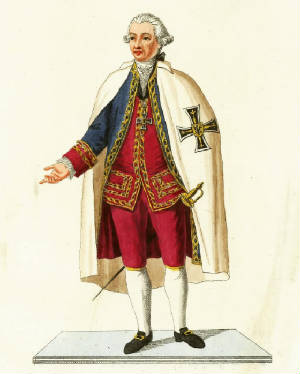
In 1386, Grand Duke Jogaila of Lithuania was baptised into Christianity
and married Queen Jadwiga of Poland, taking the name Władysław II Jagiełło and becoming King of Poland.
This created a personal union between the two countries and a potentially formidable opponent for the Teutonic Knights.
The Order initially managed to play Jogaila and his cousin Vytautas against each other, but this strategy failed when Vytautas
began to suspect that the Order was planning to annex parts of his territory.
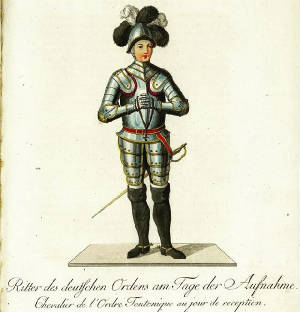
The baptism of Jogaila began the official conversion of Lithuania
to Christianity. Although the crusading rationale for the Order's state ended when Prussia and Lithuania had become officially
Christian, the Order's feuds and wars with Lithuania and Poland continued. The Lizard Union was created in 1397 by Prussian
nobles in Culmerland to oppose the Order's policy. In 1407, the Teutonic Order reached its greatest territorial extent and
included the lands of Prussia, Pomerelia, Samogitia, Courland, Livonia, Estonia, Gotland, Dagö, Ösel, and the Neumark,
pawned by Brandenburg in 1402.
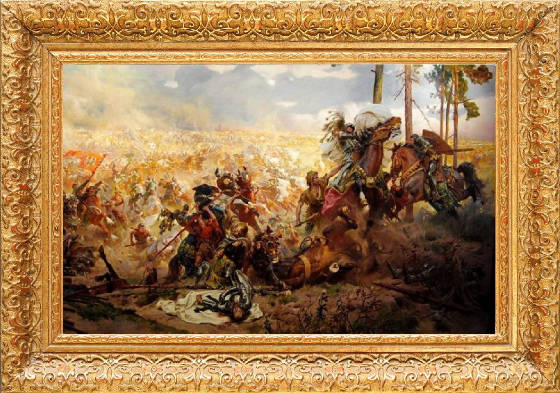
Decline
In
1410, at the Battle of Grunwald (German: Schlacht bei Tannenberg) – known in Lithuanian as the Battle
of Žalgiris – a combined Polish-Lithuanian army, led by Vytautas and Jogaila, decisively defeated the Order
in the Polish-Lithuanian-Teutonic War. Grand Master Ulrich von Jungingen and most of the Order's higher dignitaries fell on
the battlefield (50 out of 60). The Polish-Lithuanian army then began the Siege of Marienburg, the capital of the Order, but
was unable to take Marienburg owing to the resistance of Heinrich von Plauen. When the First Peace of Thorn was signed in
1411, the Order managed to retain essentially all of its territories, although the Knights' reputation as invincible warriors
was irreparably damaged.
While Poland and Lithuania were
growing in power, that of the Teutonic Knights dwindled through infighting. They were forced to impose high taxes to pay
a substantial indemnity but did not give the cities sufficient requested representation in the administration of their
state. The authoritarian and reforming Grand Master Heinrich von Plauen was forced from power and replaced by Michael Küchmeister
von Sternberg, but the new Grand Master was unable to revive the Order's fortunes. After the Gollub War the Knights lost some
small border regions and renounced all claims to Samogitia in the 1422 Treaty of Melno. Austrian and Bavarian knights feuded
with those from the Rhineland, who likewise bickered with Low German-speaking Saxons, from whose ranks the Grand Master was
usually chosen. The western Prussian lands of the Vistula River Valley and the Brandenburg Neumark were ravaged by the Hussites
during the Hussite Wars. Some Teutonic Knights were sent to battle the invaders, but were defeated by the Bohemian infantry.
The Knights also sustained a defeat in the Polish-Teutonic War (1431-1435).
In 1454, the Prussian Confederation,
consisting of the gentry and burghers of western Prussia, rose up against the Order, beginning the Thirteen Years' War. Much
of Prussia was devastated in the war, during the course of which the Order returned Neumark to Brandenburg in 1455. In the
Second Peace of Thorn (1466), the defeated Order recognized the Polish crown's rights over western Prussia (subsequently Royal
Prussia) while retaining eastern Prussia under nominal Polish overlordship. Because Marienburg Castle was handed over to
mercenaries in lieu of their pay, the Order moved its base to Königsberg in Sambia.
After the Polish–Teutonic War (1519–1521), the Order was completely ousted from
Prussia when Grand Master Albert of Brandenburg converted to Lutheranism in 1525. He secularized the Order's remaining Prussian
territories and assumed from his uncle Sigismund I the Old, King of Poland, the hereditary rights to the Duchy of Prussia
as a vassal of the Polish Crown, the Prussian Homage. The Protestant Duchy of Prussia was thus a fief of Catholic Poland.
Although it had lost control of all of its Prussian lands,
the Teutonic Order retained its territories within the Holy Roman Empire and Livonia, although the Livonian branch retained
considerable autonomy. Many of the Imperial possessions were ruined in the German Peasants' War from 1524 to 1525 and subsequently
confiscated by Protestant territorial princes. The Livonian territory was then partitioned by neighboring powers during the
Livonian War; in 1561 the Livonian Master Gotthard Kettler secularized the southern Livonian possessions of the Order to create
the Duchy of Courland, also a vassal of Poland.
After
the loss of Prussia in 1525, the Teutonic Knights concentrated on their possessions in the Holy Roman Empire. Since they
held no contiguous territory, they developed a three-tiered administrative system: holdings were combined into commanderies
that were administered by a commander (Komtur). Several commanderies were combined to form a bailiwick headed by
a Landkomtur. All of the Teutonic Knights' possessions were subordinate to the Grand Master, whose seat was in Bad
Mergentheim.
There were twelve German bailiwicks:
- Thuringia;
- Alden Biesen (in present-day
Belgium);
- Hesse;
- Saxony;
- Westphalia;
- Franconia;
- Koblenz;
- Alsace-Burgundy;
- An der Etsch und im Gebirge (in Tyrol);
- Utrecht;
- Lorraine; and
- Austria.
Outside of German areas were the bailiwicks
of
- Sicily;
- Apulia;
- Lombardy;
- Bohemia;
- "Romania" (in Greece);
and
- Armenia-Cyprus.
The Order gradually lost control of these holdings until,
by 1809, only the seat of the Grand Master at Mergentheim remained. Following the abdication of Albert of Brandenburg, Walter
von Cronberg became Deutschmeister in 1527, and later Administrator of Prussia and Grand Master in 1530. Emperor
Charles V combined the two positions in 1531, creating the title Hoch- und Deutschmeister, which also had the rank
of Prince of the Empire. A new Grand Magistery was established in Mergentheim in Württemberg, which was attacked during
the German Peasants' War. The Order also helped Charles V against the Schmalkaldic League. After the Peace of Augsburg in
1555, membership in the Order was open to Protestants, although the majority of brothers remained Catholic. The Teutonic Knights
became tri-denominational, with Catholic, Lutheran and Reformed bailiwicks.
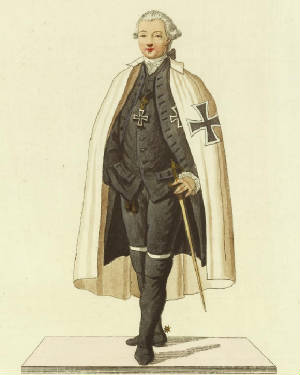
The Grand Masters, often members of the great German families
(and, after 1761, members of the House of Habsburg-Lorraine), continued to preside over the Order's considerable holdings
in Germany. Teutonic Knights from Germany, Austria, and Bohemia were used as battlefield commanders leading mercenaries
for the Habsburg Monarchy during the Ottoman wars in Europe. The military history of the Teutonic Knights was to be ended
in 1805 by the Article XII of the Peace of Pressburg, which ordered the German territories of the Knights converted into
a hereditary domain and gave the Austrian Emperor responsibility for placing a Habsburg prince on its throne. These terms
had not been fulfilled by the time of the Treaty of Schönbrunn in 1809, and therefore Napoleon Bonaparte ordered the
Knights' remaining territory to be disbursed to his German allies, which was completed in 1810.
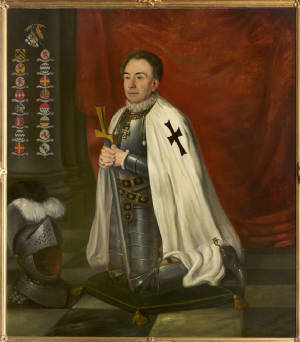
Generalkapitel
The Generalkapitel (general chapter) was the collection of
all the priests, knights and half-brothers (German: Halbbrüder). Because of the logistical problems in assembling
the members, who were spread over large distances, only deputations of the bailiwicks and commandries gathered to form the
General chapter. The General chapter was designed to meet annually, but the conventions were usually limited to the election
of a new Grandmaster. The decisions of the Generalkapitel had a binding effect on the Großgebietigers
of the order.
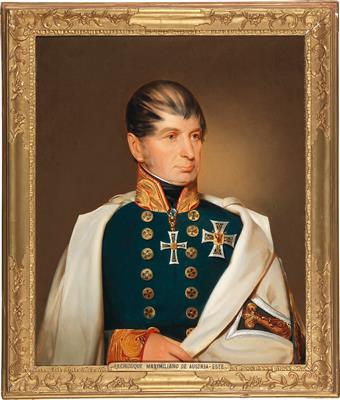
Hochmeister
The Hochmeister
(Grandmaster) was the highest officer of the order. Until 1525, he was elected by the Generalkapitel. He had the
rank of an ecclesiastic imperial state leader and was sovereign prince of Prussia until 1466. Despite this high formal position,
practically, he only was a kind of first among equals.
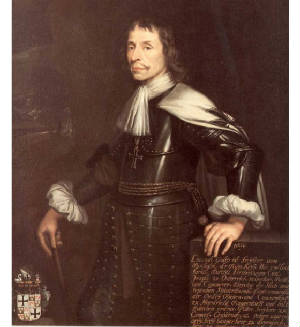
Großgebietiger
The Großgebietiger were high officers with competence on the whole order,
appointed by the Hochmeister. There were five offices.
- The Großkomtur (Magnus Commendator), the deputy of the Grandmaster
- The Treßler, the treasurer
- The
Spitler (Summus Hospitalarius), responsible for all hospital affairs
- The Trapier, responsible for dressing and armament
- The
Marschall (Summus Marescalcus), the chief of military affairs

National leadership
Landmeister
The order was divided in three national chapters, Prussia, Livland and the territory of the Holy Roman Empire of
the German Nation. The highest officer of each chapter was the Landmeister (country master). They were elected by
the regional chapters. In the beginning, they were only substitutes of the Grandmaster but were able to create a power of
their own so that, within their territory, the Grandmaster could not decide against their will. At the end of their rule
over Prussia, the Grandmaster was only Landmeister of Prussia. There were three Landmeisters:
- The Landmeister in Livland, the successor of the
Herrenmeister (lords master) of the former Livonian Brothers of the Sword.
- The Landmeister of Prussia, after 1309 united with the office of the Grandmaster, who was situated in Prussia
from then.
- The Deutschmeister, the Landsmeister
of the Holy Roman Empire. When Prussia and Livland were lost, the Deutschmeister also became Grandmaster.
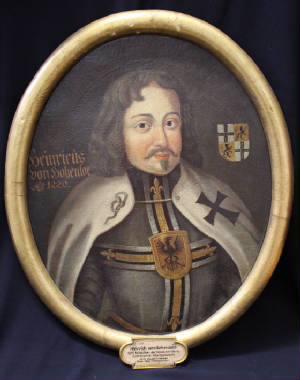
Regional leadership
Because the properties of the order within the rule of the Deutschmeister
did not form a contiguous territory, but were spread over the whole empire and parts of Europe, there was an additional
regional structure, the bailiwick. Kammerbaleien were governed by the Grandmaster himself. Some of these bailiwicks
had the rank of imperial states
- Deutschordensballei Thuringia (Zwätzen)
- Deutschordensballei
Hesse (Marburg)
- Deutschordensballei Saxonia (Lucklum)
- Brandenburg
- Deutschordensballei Westfalia
(Deutschordenskommende Mülheim)
- Deutschordensballei Franconia (Ellingen)
- Kammerballei Koblenz
- Deutschordensballei
Swabia-Alsace-Burgundy (Rouffach)
- Deutschordensballei at the Etsch and
in the Mountains (south Tyrol) (Bozen)
- Utrecht
- Lorraine (Trier)
- Kammerballei Austria
- Deutschordensballei Alden Biesen
- Sicily
- Deutschordensballei Apulia (San Leonardo)
- Lombardy
(also called Lamparten)
- Kammerballei Bohemia
- Deutschordensballei Romania (Achaia, Greece)
- Armenien-Zyprus
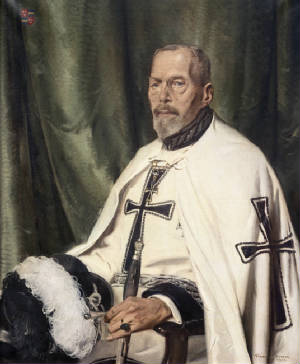
Komtur
The smallest administrative unit of the order was the Kommende. It was
ruled by a Komtur, who had all administrative rights and controlled the Vogteien (district of a reeve) and Zehnthöfe
(tithe collectors) within his rule. In the commandry, all kinds of brothers lived together in a monastic way. Noblemen served
as Knight-brothers or Priest-brothers. Other people could serve as Sariantbrothers, who were armed soldiers, and as Half-brothers,
who were working in economy and healthcare.

Special offices
- The Kanzler (chancellor) of the Grandmaster and the Deutschmeister. The chancellor
took care of the keys and seals and was also the recording clerk of the chapter.
- The Münzmeister (master of the mint) of Thorn. In 1246, the order received the right to produce its
own coins – the Moneta Dominorum Prussiae – Schillingen.
- The Pfundmeister (customs master) of Danzig. The Pfund was a local customs duty.
- The Generalprokurator the representative of the order at the Holy See.
- The Großschäffer, a trading representative with special authority.
The
Modern Organization - Teutonic Order
The Roman Catholic order continued to exist in Austria,
out of Napoleon's reach. From 1804 until 1923 (when Archduke Eugen of Austria resigned the grandmastership), the order was
headed by members of the Habsburg dynasty. All the subsequent Grand Masters were priests.
In 1929, that branch of the Teutonic knights was converted to a purely spiritual Roman Catholic
religious order and renamed the Deutscher Orden ("German Order"). After Austria's annexation
by Nazi Germany in 1938, the Teutonic Order was suppressed throughout the Großdeutsches Reich until defeat
of that regime, although the Nazis used imagery of the medieval Teutonic knights for propagandistic purposes. The Roman Catholic
order survived in Italy, however, and was reconstituted in Germany and Austria in 1945. By the end of the 20th century, this
part of the Order had developed into a charitable organization and established numerous clinics, as well as sponsoring excavation
and tourism projects in Israel.
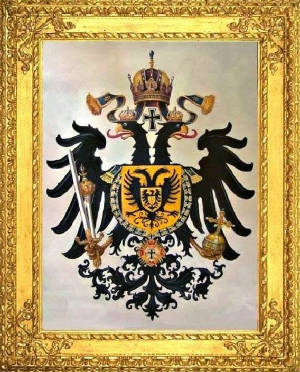
The Chivalric Arm
The Teutonic Order was formally revived
back into a Chivalric Order of Knighthood, thus making a separate Chivalric Arm of the Teutonic Order from the
present Clerical Arm of the Order in Vienna, By His Imperial and Royal Highness Prince Karl Friedrich of Germany,
on Christmas Day in the year of Our Lord Two Thousand and One, by Imperial Decree. His Imperial Highness assumed
the Grand Mastership of the Teutonic Order - Deutscher Orden, on the 1st day of Janaury, 2002, thus becoming the
60th Chivalric Hoch-und-Deutschmeister of the Teutonic Order of Saint Marys Hospital in Jerusalem - Deutscher Orden - German
Order.
The Clerical
Arm
The Clerical branch now consists of approximately
1,000 members, including 100 Roman Catholic priests, 200 nuns, and 700 associates. While
the priests are organized into six provinces (Austria, the Czech Republic, Germany, Italy, Slovakia, and Slovenia) and predominantly
provide spiritual guidance, the nuns primarily care for the ill and the aged. Associates are active in Austria, Belgium,
the Czech Republic, Germany, and Italy. Many of the priests care for German-speaking communities outside of Germany and
Austria, especially in Italy and Slovenia; in this sense the Teutonic Order has returned to its 12th-century roots: the
spiritual and physical care of Germans in foreign lands. The current 8th Clerical Grand
Master and General Abbot of the Order, who also holds the title of Hochmeister, is Frank Bayard since 2018.
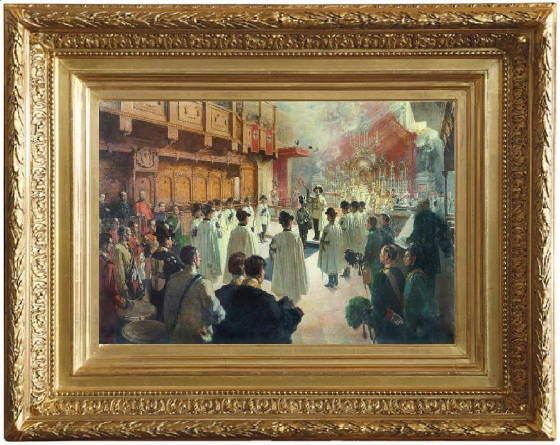
The Seats of the Teutonic Order today
The current seat of the 8th Clerical Grand Master is the Deutschordenskirche ("Church of the German Order") in Vienna.
Near the Stephansdom in the Austrian capital is the Treasury of the Teutonic Order, which
is open to the public, and the Order's Central Archive. The current seat of the 60th Chivalric Grand
Master of the Teutonic Order is the Castle in Bad Mergentheim in Germany, which has been the historical seat of the
Hochmeisters of the Teutonic Order - German Order from the year 1525 and has again become the historical seat of the Teutonic
Order - German Order since 2001 under the decree of the 60th Chivalric Hochmeister.
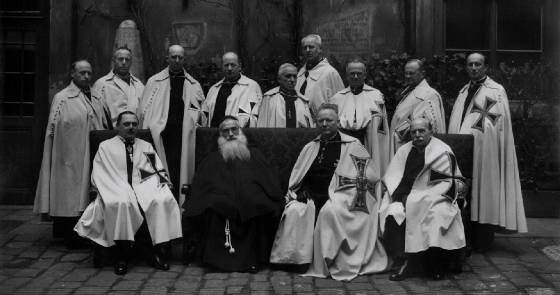
Honorary Knights
Honorary
Knights of the Teutonic Order include Otto von Habsburg, Konrad Adenauer, and others.
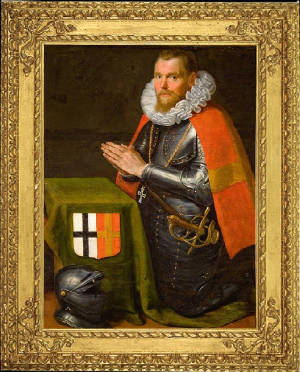
Protestant Bailiwick of Utrecht
A portion of the Order retains more of the character of the knights during the height of its power and prestige.
Der Balije van Utrecht ("Bailiwick of Utrecht") of the Ridderlijke Duitsche Orde ("Chivalric
German [i.e., 'Teutonic'] Order") became Protestant at the Reformation, and it remained an aristocratic society. The
relationship of the Bailiwick of Utrecht to the Roman Catholic Deutscher Orden resembles that of the Protestant Bailiwick
of Brandenburg to the Roman Catholic Order of Malta: each is an authentic part of its original order, though differing from
and smaller than the Chivalric and Clerical branchs of the Teutonic Order.
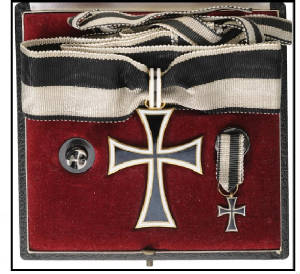
Insignia of the Teutonic Order
The Knights wore white surcoats with a black cross, granted by Innocent
III in 1205. A cross pattée was sometimes used.
The coat of arms representing the grand master (Hochmeisterwappen) is shown with a golden cross fleury or cross
potent superimposed on the black cross, with the imperial eagle as a central inescutcheon. The golden cross fleury overlaid
on the black cross became widely used in the 15th century. A legendary account attributes its introduction to Louis IX of
France, who is said to have granted the master of the order this cross as a variation of the Jerusalem cross, with the fleur-de-lis
symbol attached to each arm, in 1250. While this legendary account cannot be traced back further than the early modern period
(Christoph Hartknoch, 1684), there is some evidence that the design does indeed date to the mid 13th century. The black cross pattée was later used for military decoration and insignia by the
Kingdom of Prussia and Germany as the Iron Cross and Pour le Mérite.
The motto of the Order is "Helfen, Wehren, Heilen" ("to help, to defend, to heal").


























